Nitobe Garden
(Sound Investigation)
Sound On <
Nitobe Garden-Experience List
Nitobe Garden-Sketch
Spanish Banks
(Sound Investigation)
Sound On<
Spanish Banks-Experience List 
Spanish Banks -Sketch
Exploring the natural and manmade elements in the Nitobe Garden and Spanish Banks Beach, I focused on how their physical elements create visual compositions (as if in a painting or, well, drawing…) and how these moments may be observed by visitors. 
While the Nitobe Garden is undoubtedly a visually stunning landscape that is highly manicured, seeing its hidden infrastructure is like catching it tell a secret. Duly hidden so as to not take away from the garden’s serenity, but equally necessary for the maintenance of the garden year-round, the infrastructural elements are various and numerous throughout and can pull visitors out of the garden’s crafted “natural” landscape.
The two views above show the west and east views of the beach. The first one looks west toward the UBC peninsula where no development is seen on the mountain across the water. Compared to the east-facing view, the landscape reads differently on the ground as the downtown highrises fill the horizon. I found I spent most of my time looking away from the east view as I preferred the “natural” landscape more.
I chose to capture the instances below as they are human interventions with visual compositions that were made of natural and manmade objects created by and experienced by people.

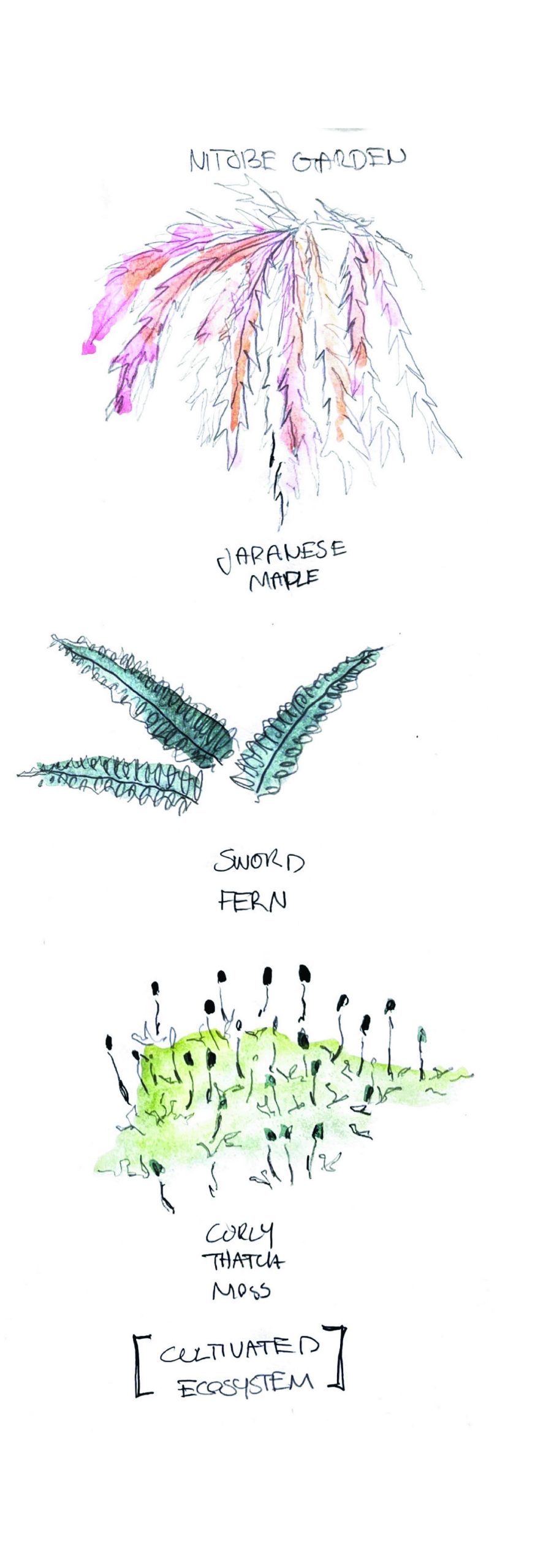

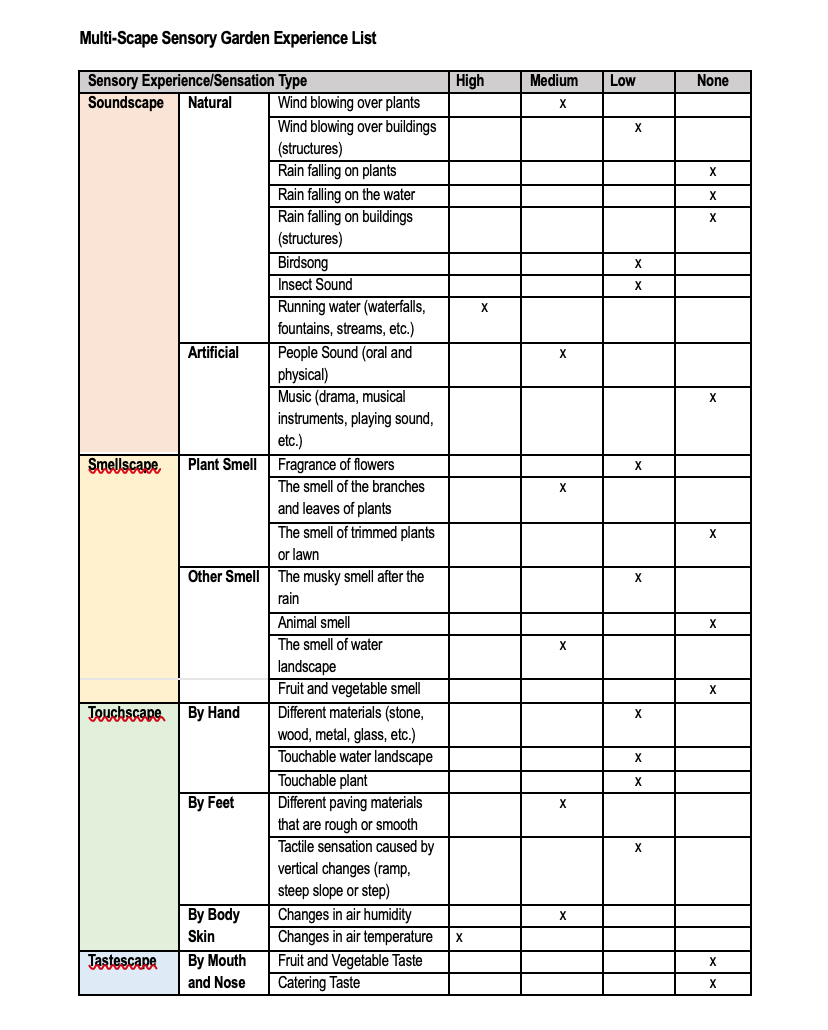
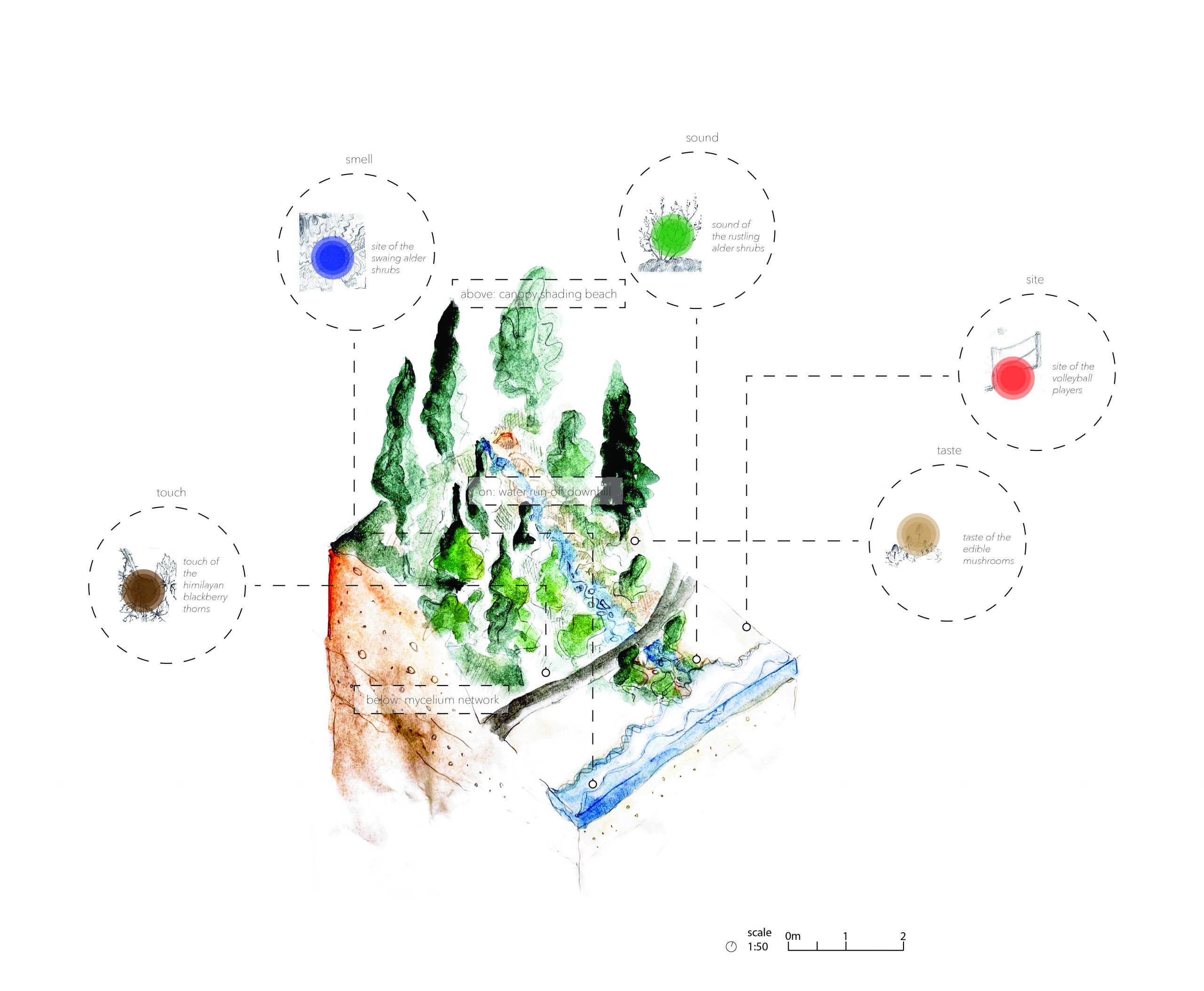

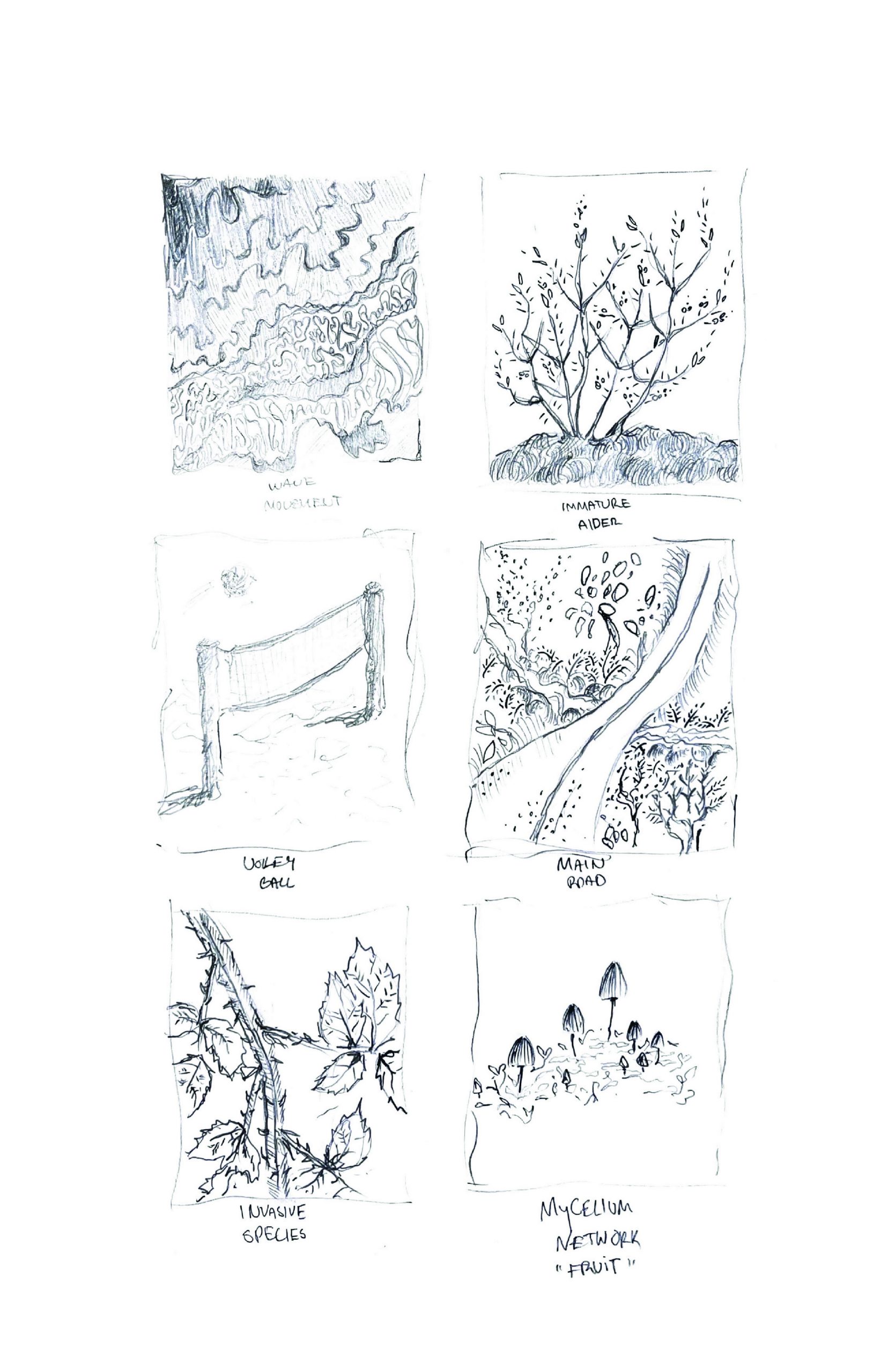

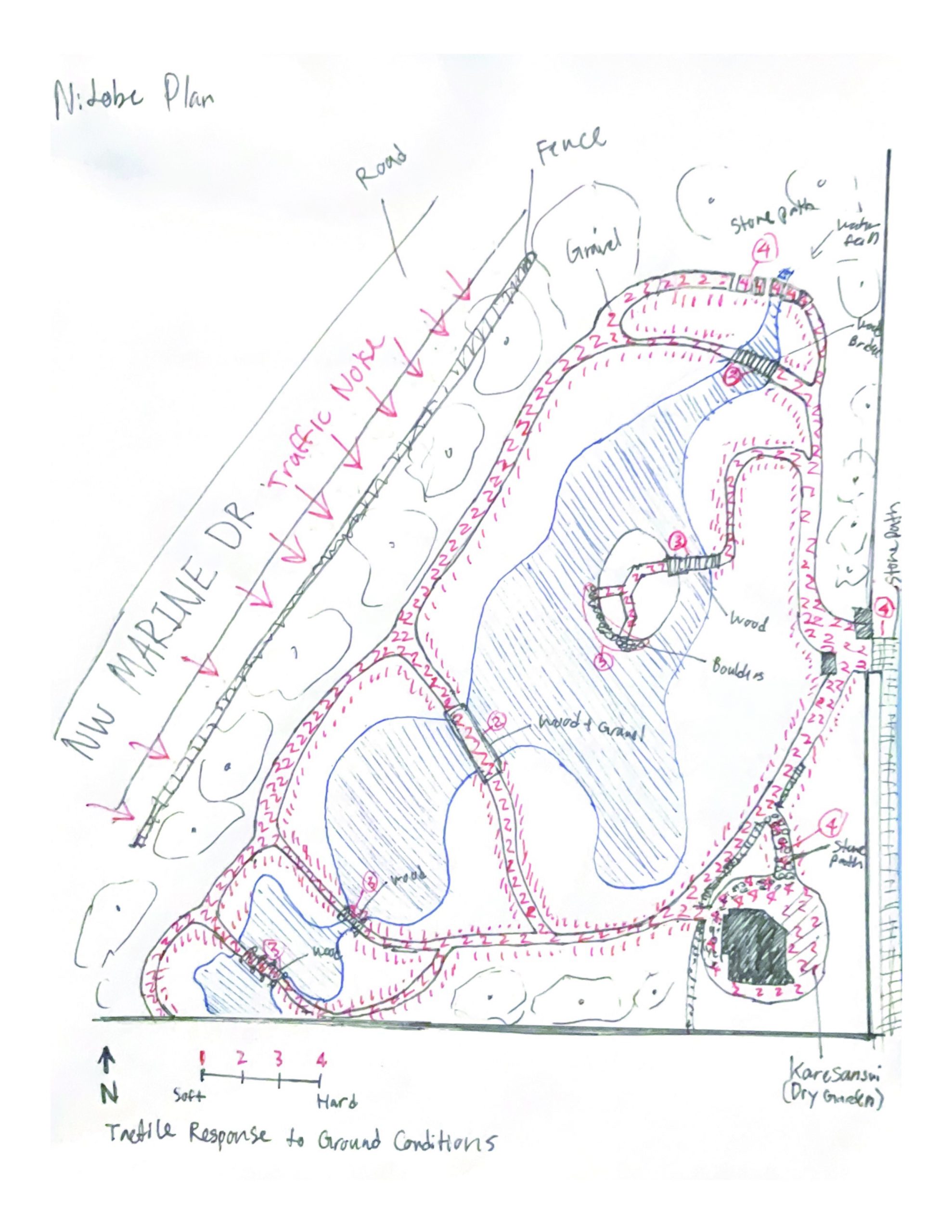


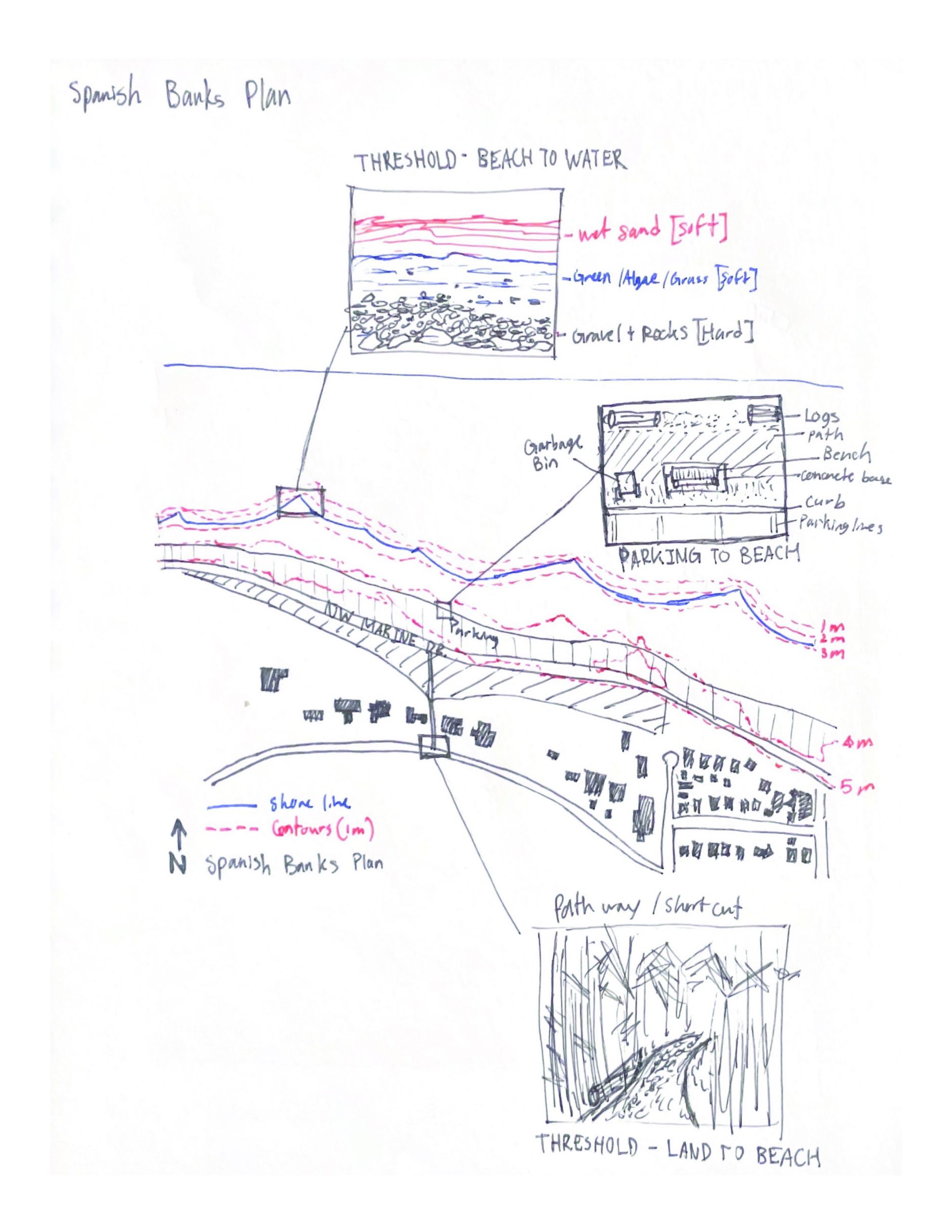


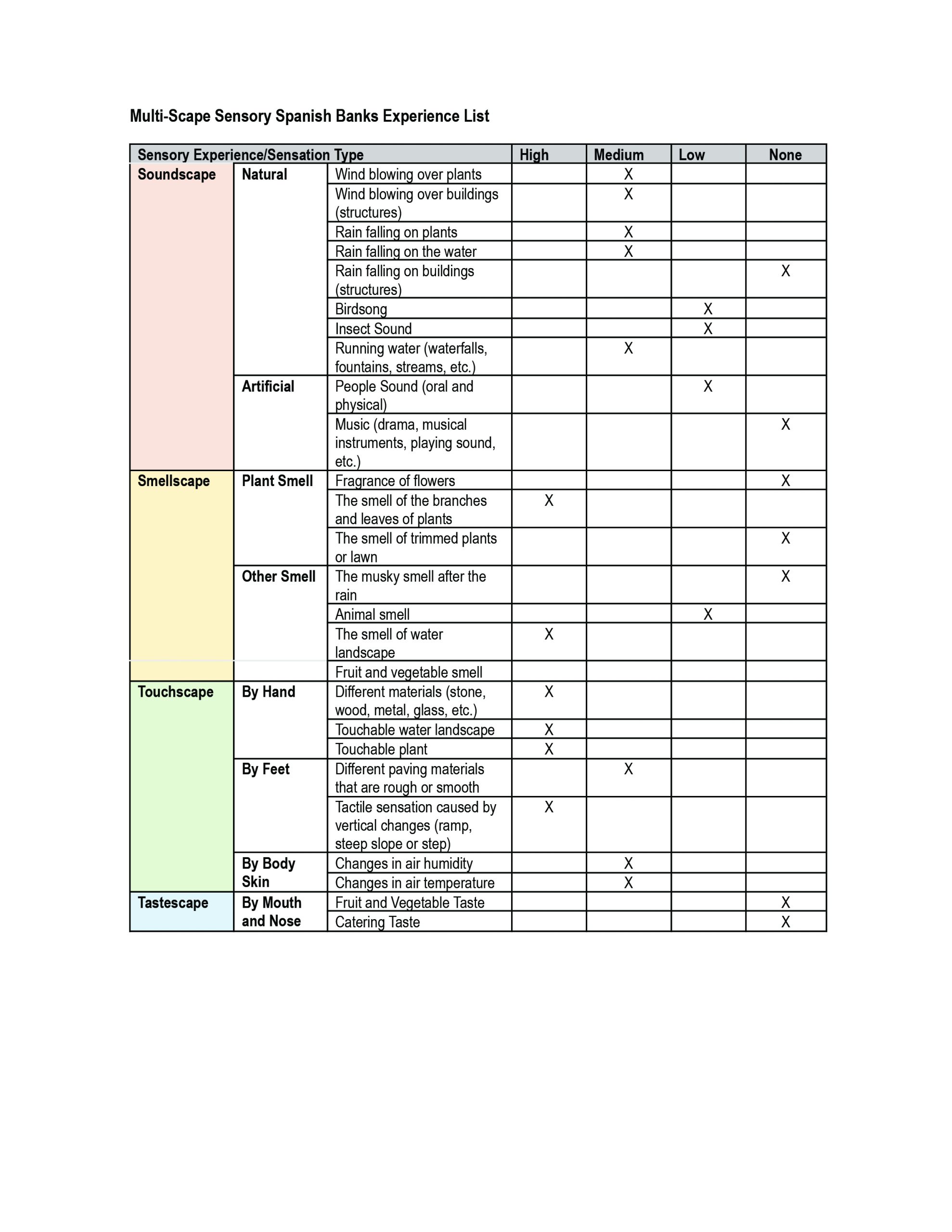
While walking on the beach, I couldn’t help but notice I was becoming exhausted very quickly. It is more difficult to keep stability on deep sand than it is on solid ground, and requires more energy as well. You have to lift your foot vertically out of the sand as well which requires knee bending that many people may not be capable of doing comfortably or without pain.
Farther from the beach, on the sidewalk adjacent to the road, I saw someone using a walking cane and realized that it must be pretty difficult to use a cane on a sandy beach. The lack of a solid surface to plant the cane on for stability seems like it would clearly pose some issues. It is unfortunate that there aren’t many solid walking paths within the sandy area. However, I think it might be possible to adapt the traditional walking cane to be better built for sandy terrain.
The issue might be addressed by creating a larger surface area that would come in contact with the ground. I modeled the new cane after ski poles – for deep powder you typically want to use a similar style basket a the tips of your ski poles, the increased surface area helps with stability so your poles can compact the snow instead of sinking.
Nitobe Garden
The water features are central to the site and situated between the green landscapes. These conditions of the large tree canopies and pools of water creates a very cool and crisp environment on humid days for humans and animals.
Spanish Banks
In contrast, the body of water is separated from the green landscape by the beach. The majority of trees on this site are situated along the road and at a higher elevation, casting constant shadows throughout the day onto the road below. While the beach itself gets quite hot, there is a constant breeze as I near the water.



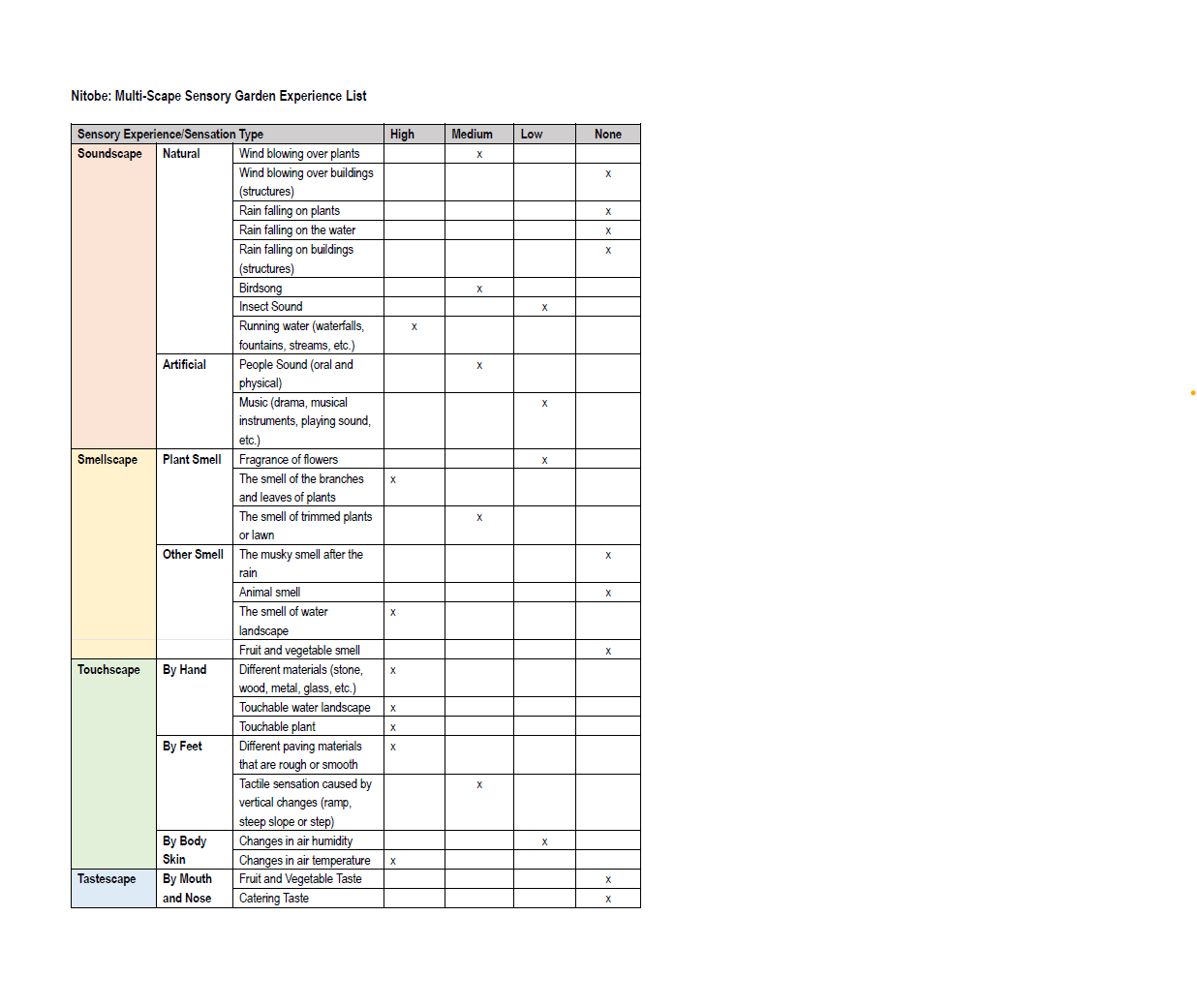
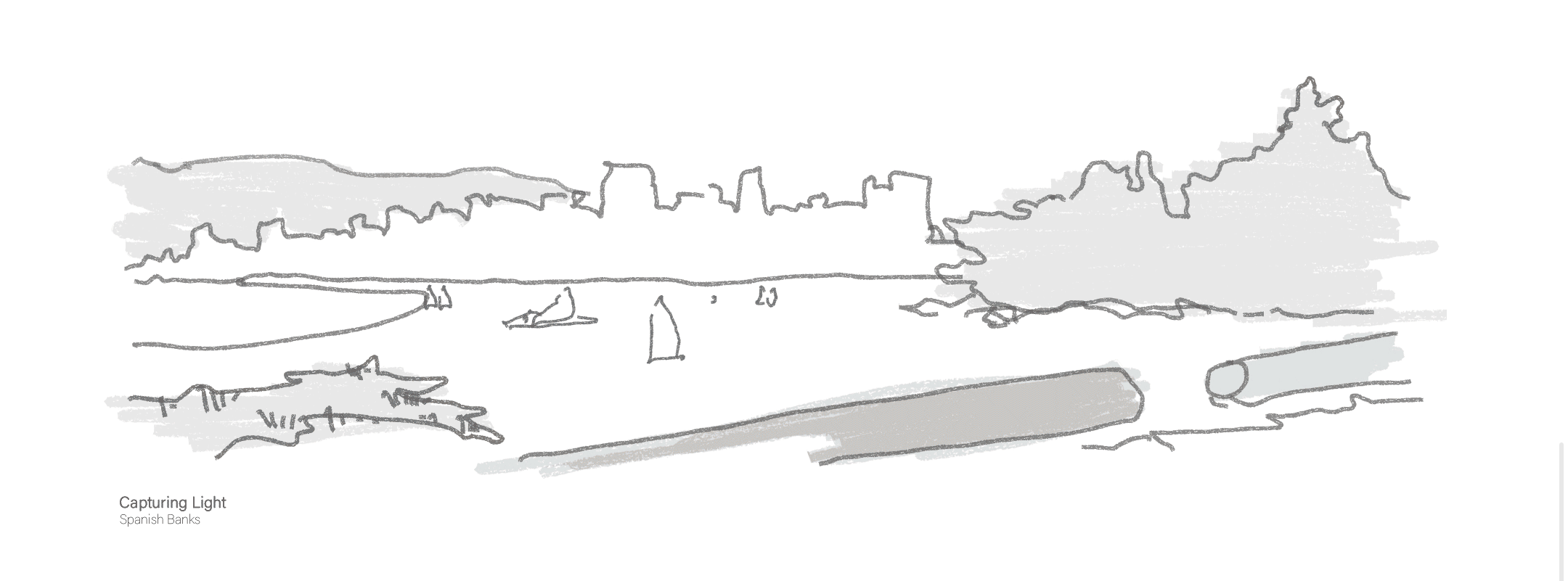

Sketches
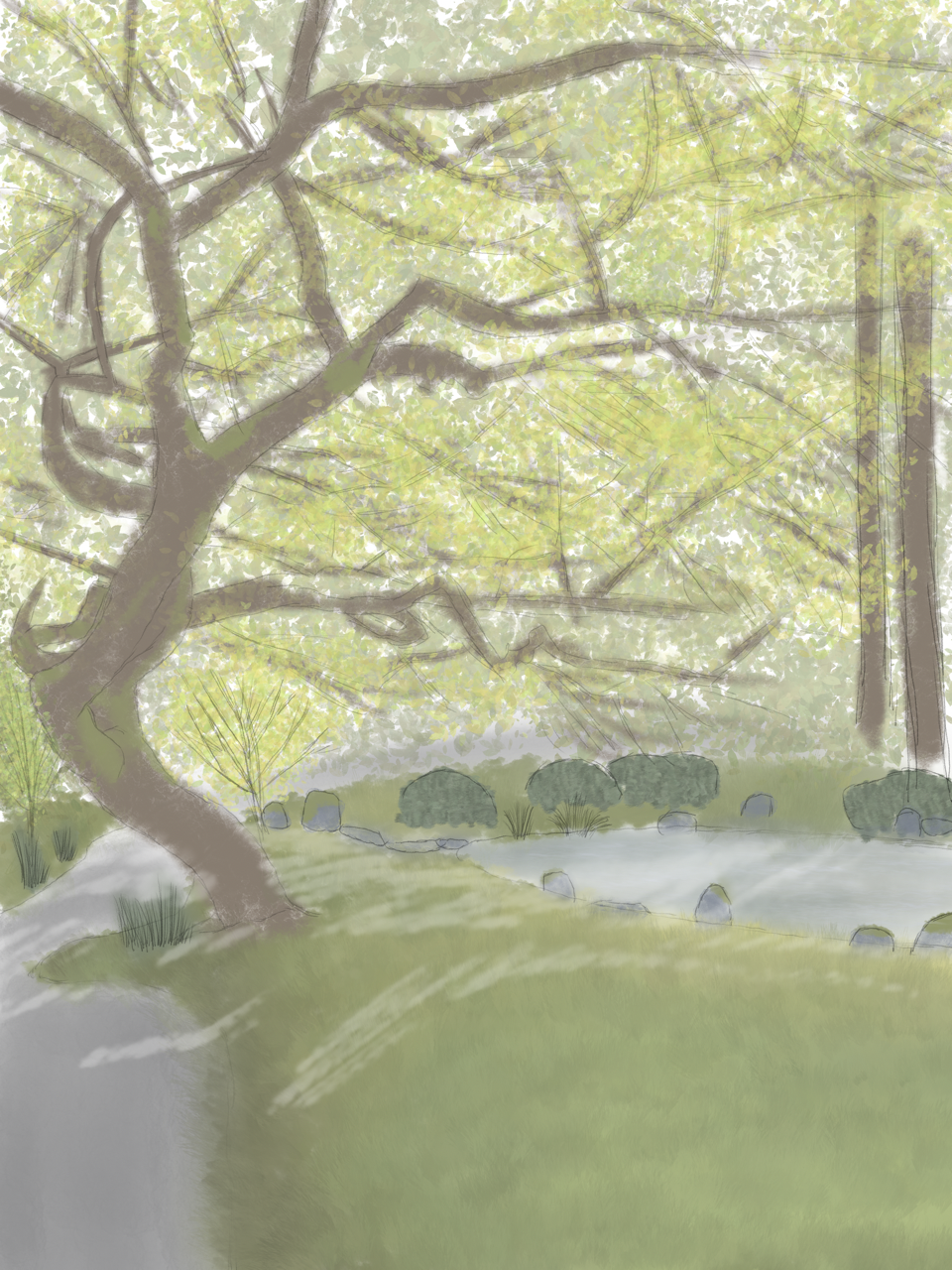

Site Notes
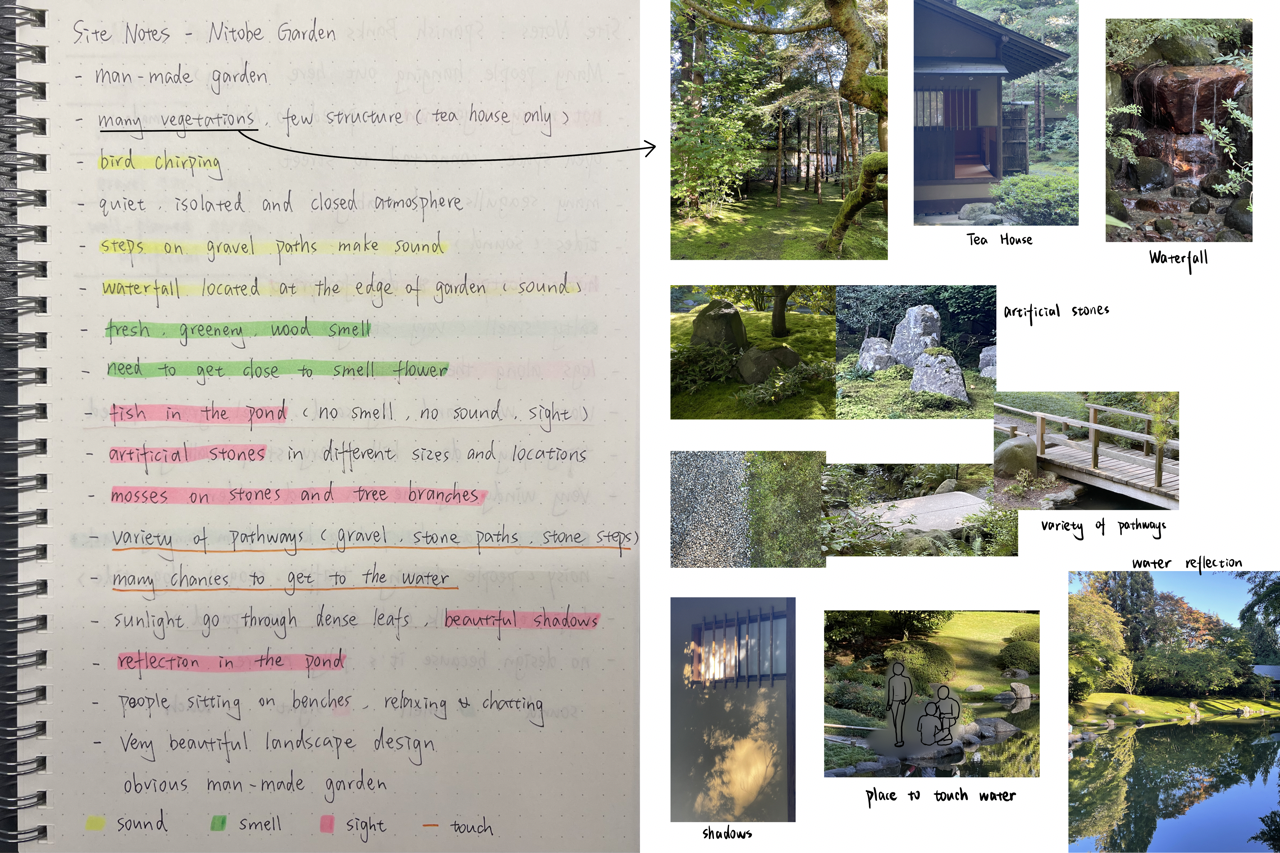
The sound of waterfall at Nitobe Garden
Multi-sensory Matrix

Sketches

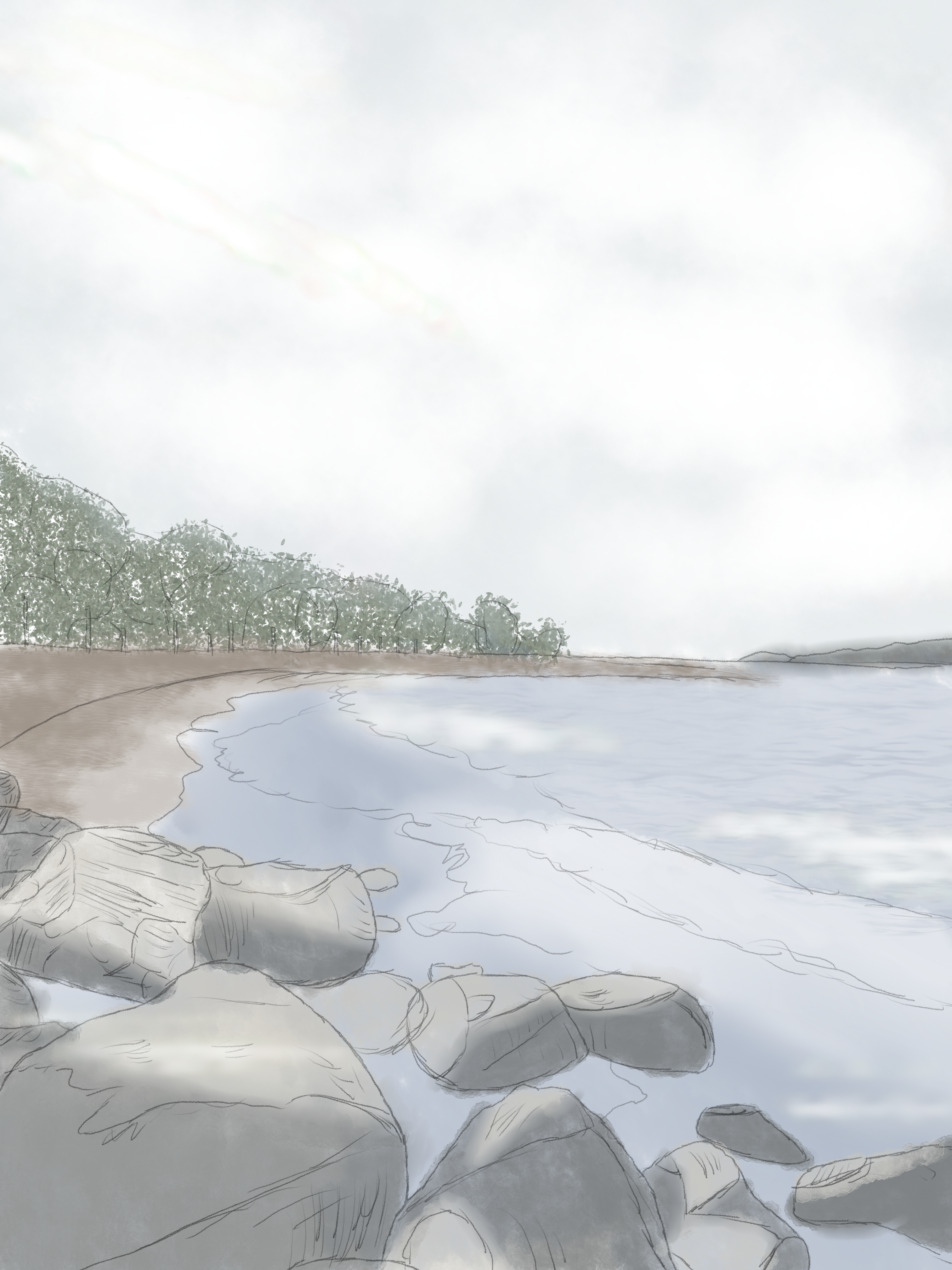
Site Notes
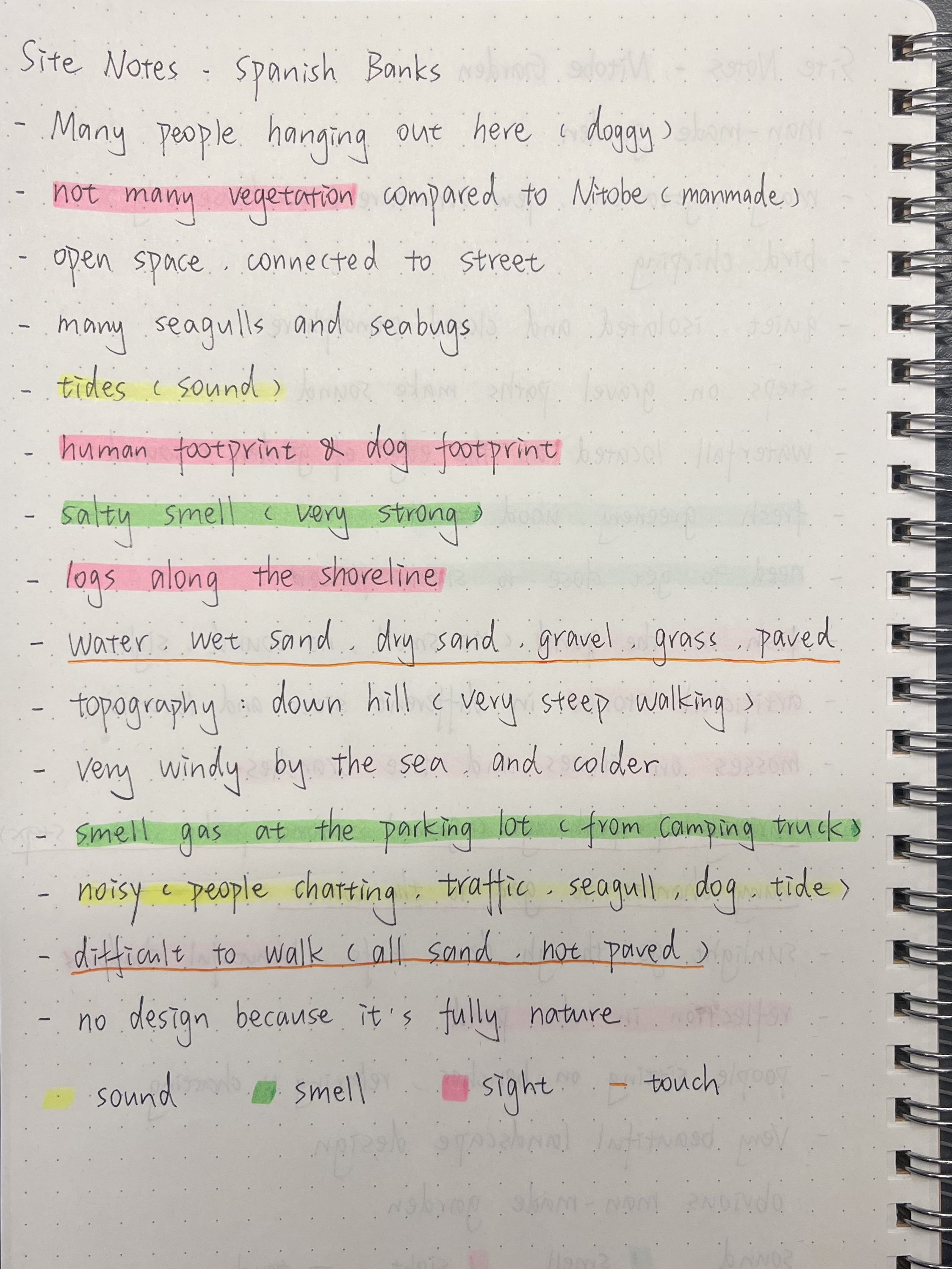
The sound of tides at Spanish Banks
Multi-sensory Matrix
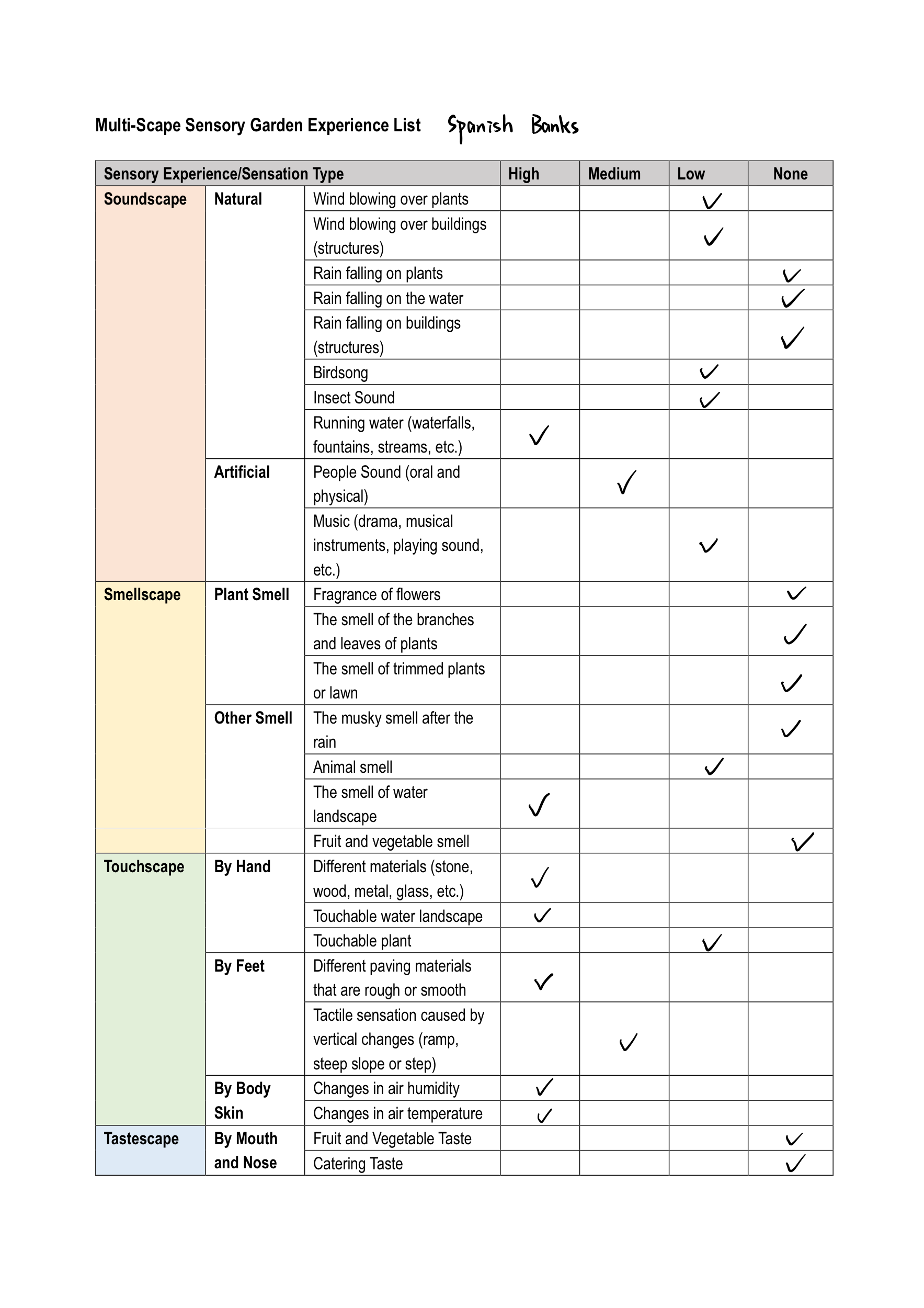

Assignment 03: Supernatural
Individual – Delivery Time 1 Week
In this assignment, students will observe & record local environments.
Objective: Compare and contrast different forms of greenspaces. Examine the program, structure, and function of human-made and natural areas.
Process:
Deliverables*:
Ensure the scale of your drawing is clear. Include a scale bar and north arrow when appropriate. The deliverables can be drawn analog, digitally or as a combination of both.
Please submit your work to the blog by Tuesday, September 26th at 11:59 pm.
* In general, the number of deliverables is flexible for this course. We encourage students to make their own decision about what drawings are needed; the deliverables are a suggestion. For example, students may wish to alter the scale or add additional drawings to explain their observations.
References:
Required:
Moore, C. W., Mitchell, W. J., & Turnbull, W., Jr. (1988). The poetics of gardens. MIT Press. Available on Canvas.
Roehr, D. & Bailey, S. (2020). Gardens are… Buildings: A Garden’s Role in Unprecedented Times. 27. 24-34. Retrieved from https://www.researchgate.net/publication/344013675_Gardens_are_Buildings_A_Garden’s_Role_in_Unprecedented_Times
Roehr, D. & Wei, F. & Bailey, Sean. (2021). “Sensewalk Mapping” as a Method for Teaching Multi-sensorial Landscape Perception. Landscape Architecture. 28. 96-106. Retrieved from https://www.researchgate.net/publication/354765251_Sensewalk_Mapping_as_a_Method_for_Teaching_Multi-sensorial_Landscape_Perception
Recommended:
Check out these visualization tools:
DES430 2022 Student Examples:
Liana Zheng: https://blogs.ubc.ca/des430x2022w1/2022/09/27/assignment-3-liana-zheng/
Cole Quist: https://blogs.ubc.ca/des430x2022w1/2022/09/28/cole-quist-assignment-3/